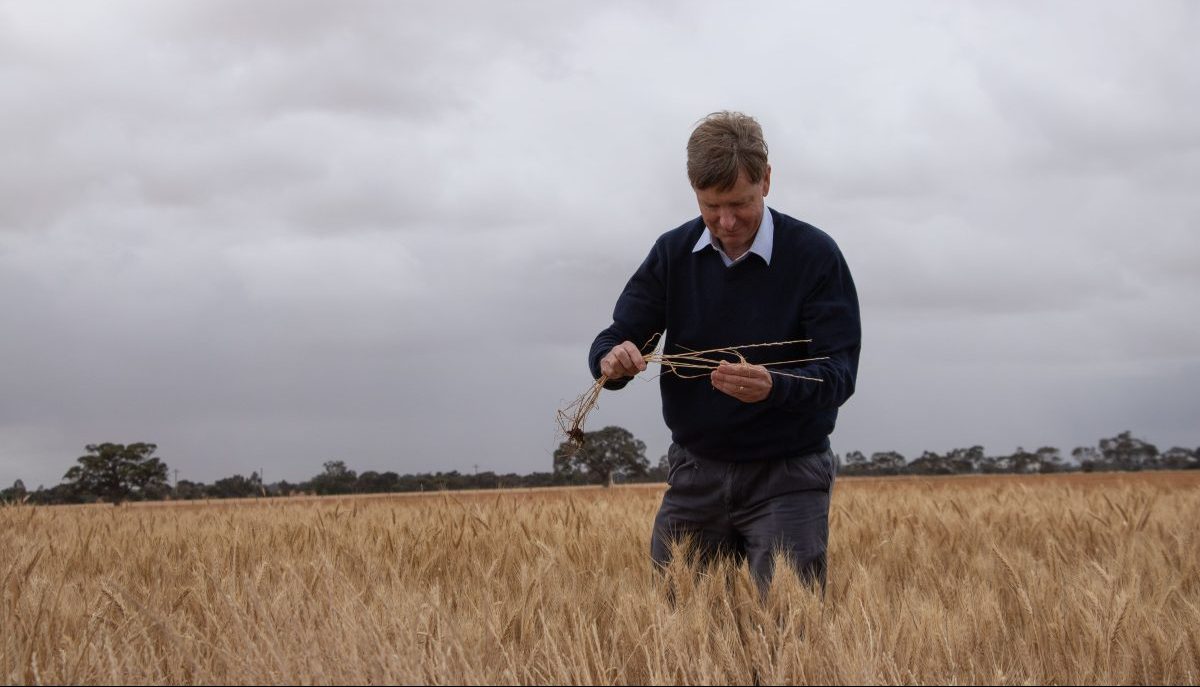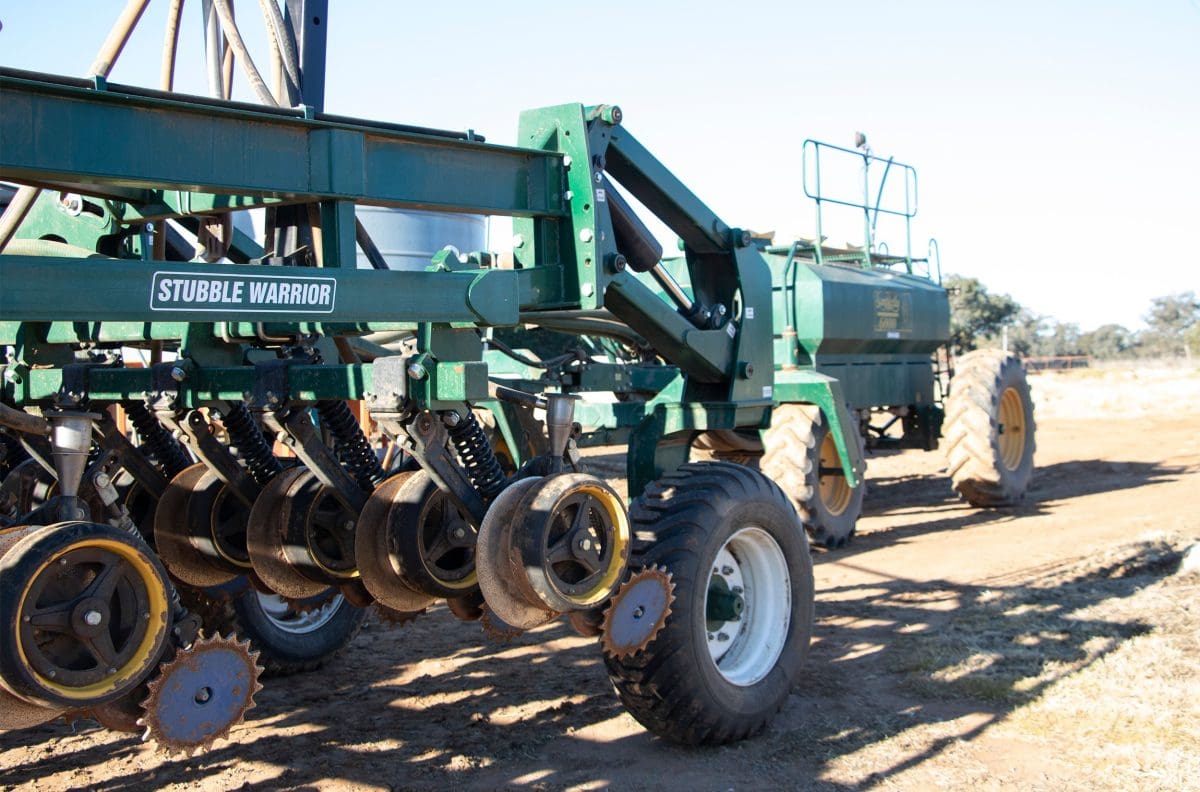
University of Adelaide professor of weed Management Dr Chris Preston says it is difficult to properly implement the WeedSmart Mix and Rotate strategy in a disc seeding system when there are so few pre-emergence herbicide options available.
DISC seeding equipment is gaining popularity for its ability to handle crop residue, improved precision, faster sowing speeds, suitability for narrow row spacing, and tendency to produce fewer clods when dry sowing.
These systems have an important downside, though, as very few pre-emergent herbicides are registered for use in conjunction with disc seeders where annual ryegrass and other weeds have resistance to in-crop herbicides.
University of Adelaide researcher Chris Preston said it was essential to follow the WeedSmart Big 6 tactic to mix, rotate and double-knock herbicide modes of action when adding pre-emergence herbicides to a weed control program.
“Unfortunately, it is difficult to properly implement this strategy in a disc seeding system when there are so few pre-emergence herbicide options available,” Dr Preston said.
“There is also a very real risk of crop damage when using pre-emergence herbicides in a disc-seeding system, and this has a knock-on effect on the crop’s ability to compete with weeds like annual ryegrass.
“Crop safety is number one priority; the next priority is to avoid using single-molecule applications.”
The crop safety risk arises in disc-seeding systems because herbicide remains in the soil above the crop seed in a minimal disturbance environment.
In particular, single disc seeders tend to throw minimal soil from the crop seed row, increasing the risk of herbicide damage.
Modifications such as wavy coulters can increase the amount of soil throw and make registered herbicide use safer.
Another option is to use a rate from the lower end of the rate range of the riskier herbicide and mix it with a safer herbicide product, such as tri-allate from Group 15, or J, an example being Avdex Xtra in wheat.
Dr Preston said the weakness in this approach was that most of these “mixtures” will involve applying Group 15, or J or K herbicides, and these put considerable pressure on this single mode of action.
An alternative is to use a weaker but safer herbicide pre-sowing, and partner it with an early post-emergence herbicide.
Herbicides with registrations for early post crop-emergence application against annual ryegrass are:
- Boxer Gold, prosulfocarb plus metolachlor from Group 15, or J/K, in wheat and barley;
- Mateno Complete,pyroxasulfone, Group 15, or K, plus Aclonifen, Group 32 in wheat and barley; and,
- Tenet, metazachlor, Group 15 or K in canola.
These post-sowing options allow growers using disc seeders to include pre-emergence herbicides in their annual ryegrass control program, albeit with limited opportunities to mix or rotate away from mode of action Group 15.
The only option to use another mode of action is in a canola phase where Tenet can be mixed with clethodim from Group 1, or A.
Early post crop emergence application of Boxer Gold or Mateno Complete needs to occur from three-leaf in barley or one-leaf in wheat, and the ryegrass also needs to be small for best results.
The herbicides require rain to activate.
The high proportion of standing stubble in many disc systems is advantageous when getting pre-emergence herbicides on to the soil.
“Correct application is essential to ensure maximum benefit from pre-emergence chemistry.”
“Always use nozzles that produce a high percentage of large droplets to drive through stubble and on to the soil: that is, very coarse, or coarser.
“Keep ground speed around 15-18km/hour to allow the boom to stay 50cm above ground level.
“Raising the boom height above 50cm produces more smaller droplets, regardless of the nozzle size.”

Disc seeders are popular in years like this when crops need to be planted through heavy stubble loads.
The key to the success of weed control in disc-seeding systems is to ensure weeds are tackled throughout the weed-growth cycle, reducing the pressure on pre-emergence herbicides.
To support the pre-emergence herbicide program in a disc-seeder system, focus on low weed seedbank farming practices.
Include other WeedSmart Big 6 tools like: strong crop competition; using competitive varieties; early sowing and narrow rows; crop-rotation strategies, including double breaks; stopping seed set with crop topping; swathing and cutting for hay, and implementing harvest weed-seed control.
By implementing a diverse strategy, many growers who use disc seeders have successfully driven down the seed banks of important weeds, such as annual ryegrass, despite the limited options with registered pre-emergence herbicides.
Pre-emergence herbicides will feature on the program at the next WeedSmart Week event, scheduled for August 1-3 in Dubbo, New South Wales.
Register early for this event and consider applying for a GRDC Study Tour grant.
For more information about mixing and rotating herbicides, visit www.weedsmart.org.au
Source: WeedSmart
